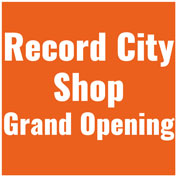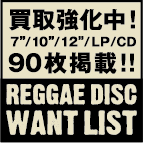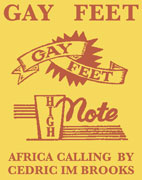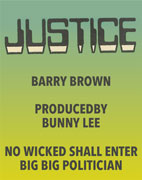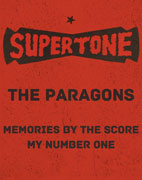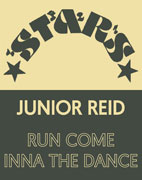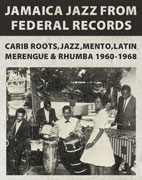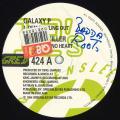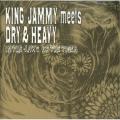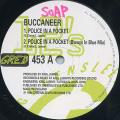King JammyText by Harry Hawks
The most important producer in the development of computer driven reggae music...
King Jammy
| Real Name | Lloyd James |
| Born | Oct 26, 1947 |
| Place of Birth | Waterhouse Montego Bay Jamaica |
In the early part of the decade Jammy had produced top quality roots records but it was his work with a young Waterhouse artist known as 'Half Pint' that showed the way forward for the music. Jammy's brand new sound stayed true to the spirit of reggae but embraced digital technology to form a bridge between the sound of the seventies and the ragga attack of the nineties.
'Half Pint' had been singing on Kingston's Black Scorpio sound and had the ability to transfer the raw excitement generated in the dance halls onto vinyl. Earl Chinna Smith's band, known as The High Times Band after Chinna's High Times label, provided the backing, and the backbone, for the 'Money Man Skank' album. This release was a key record in the transition from dance hall to digital. The Roots Radics had also been working on this new approach since the turn of the decade and their stripped to the bone prototype sound came to a logical conclusion with the introduction of computer technology. The Radics had showed how well the 'back to basics' approach could work but computer built rhythms now changed the pattern and it worked even better.
"The real breakthrough came at the end of 1985 with the release of Wayne Smith's 'Under Me Sleng Teng'. This revolutionary record used a slowed down, pre-set rock & roll rhythm from a Casio music box, and was recorded in Jammy's tiny back bedroom studio at Iris' house on St. Lucia Road. Jammy went from Prince to a King and ruled the Jamaican music scene for the rest of the decade." Dave Hendley
Wayne Smith had already recorded the 'Youth Man Skanking' album for Jammy in the early eighties and he started working with him again in 1984. While practising with Noel Dailey and his Casio music box they slowed down a 'rock' rhythm but then lost it. Noel spent days looking for the rhythm and when he finally found it again the pair went straight to Jammy.
"The words of 'Sleng Teng' just leapt into my mind and the song was done." Wayne Smith
Tony Asher, one of the few musicians at the time who owned an electronic keyboard and was comfortable about using it, built the final rhythm track. Its impact was immediate. The fashion for updating classic sixties rhythms was immediately forgotten as everyone queued up to ride 'Sleng Teng'. This modified Eddie Cochran riff became the most versioned reggae rhythm ever with over two hundred different cuts released in a matter of months. Digital reggae had arrived and the way that the music was made now changed irrevocably.
'Sleng Teng' had opened the door but it was another Jammy's rhythm that went on to create the sound of modern dance hall music. One Sunday afternoon Jammy, Steely & Clevie and Bobby Digital were working together in the studio on a track that the deejay Admiral Bailey voiced as 'Punanny'. This risqué Jamaican slang term for the female pudenda would became the rhythm template for every one of the ragga, juggling and dance hall beats of the next decade. Expensive studio time and costly 'real' musicians were no longer a prerequisite for making a record and this encouraged a whole new wave of independent producers and artists to step forward.
Prince Jammy was promoted to King Jammy and his ubiquitous blue and white label and the King Jammy's Super Power Sound System (Jammy had rebuilt and expanded the sound and changed its name from Jammy's Hi Fi to Jammy's Super Power) stayed at the forefront of all that was happening for the remainder of the decade. In 1987 he won the coveted Rockers award for best producer.
Jammy's willingness to nurture new talent meant that he was always surrounded by top class engineers and musicians. Many of the people involved in the initial thrust of Jammy's digital revolution subsequently went on to forge their own highly successful careers. Bobby Dixon "one of the quickest learning guys I've ever met" acquired the nickname of 'Bobby Digital' due to his technical prowess. Two other important members of the crew were Wycliffe 'Steely' Johnson and Cleveland 'Clevie' Browne known as Steely & Clevie.
"Credit must go to Jammy himself for being willing to try something new, but Jammy kept himself surrounded with the youth vibes and knew what people wanted." Beth Lesser
Mikey Bennett also worked extensively with Jammy and his work at St Lucia Road coincided with Jammy's upgrading his eight track tape recorder to a sixteen track machine. Brian Thompson and Winston Hislop, better known as Brian & Tony Gold, sang the backing vocals to many of Jammy's productions. Jammy continued to demonstrate an unerring ability to put the right people together in the right place at the right time aided throughout by his brother, Trevor 'Uncle T' James(Trevor James), who has always been Jammy's "right hand man".
Jammy's music was massively popular and the amount of records on all formats, 7", 12" and LP, that he produced during his time at the top was staggering. Through his understanding of the business and his extended web of contacts the records were always available in Kingston, London and New York. King Jammy's Super Power was the number one sound with the best deejays and dub plates. Shabba Ranks, the most successful deejay of the ragga era, made his name live and direct on King Jammy's Super Power and many of his breakthrough hit records were produced by the King. Jammy's Recording Studio was a hotbed of musical activity as numerous stars, and many more would be stars, waited for their opportunity to voice specials for the sound system operators who had come to St. Lucia Avenue to cut dubs at one of the three dub cutting studios.
Countless artists made their debut on the Jammy's label and countless established stars of the music also recorded at his Waterhouse studio. New and veteran artists, singers, deejays and musicians can all claim their very own part of the exclusive but all inclusive King Jammy's sound. From humble beginnings Jammy's music factory progressed to two recording studios and its own pressing plant and with his four sons John John, Christopher 'CJ', Trevor 'Baby G' and Jam 2 all producing music from the family's St. Lucia Avenue base the future is assured for his musical dynasty.
Date Added: Jun 21, 2019
Copyright (C) 2024 Dub Store Sound Inc.
Related Item(s)
B side) King Jammys Crew - Tune In Riddim
| King Jammy, Dry & Heavy - King Jammy Meets Dry & Heavy: In The Jaws Of The Tiger (All Dub) (日本盤)(Beat Records JPN)CD=EX+ CASE=EX- LINER=EX+ OBI=EX+ |
B side) King Jammys Crew - Scotland Yadie Riddim





